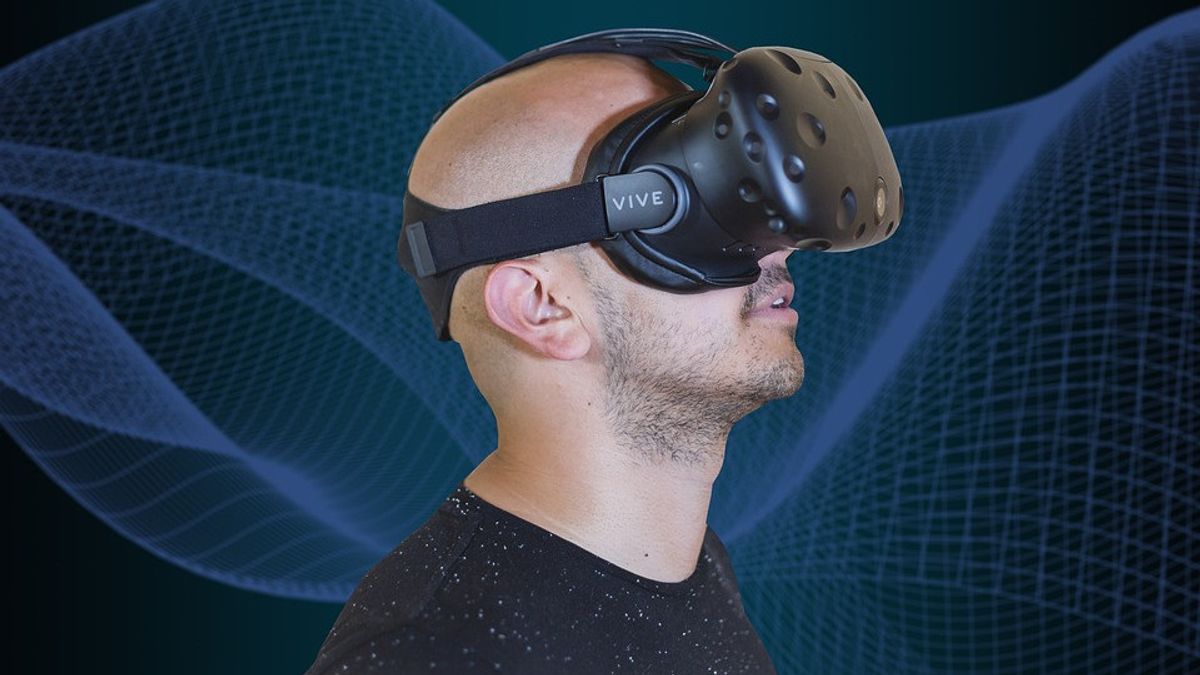JAKARTA - An artist named Shaun Gladwell created a virtual reality (VR) experience that describes near-death or near-death experience (NDE). In this experience, participants were brought through stages from heart attacks to brain death and gave them an idea of what might have happened in the last moments of their lives.
The VR also features parts of the body's experience, which allows users to see their dead bodies when they float on top of them. One TikTok user who has this experience, known as croom 12, says that he lies in a vibrating bed when he dies and sees doctors fail to revive him.
However, this experience can also give some people anxiety and users can stop that experience at any time. What's more, after the heart stops beating, someone doesn't know for sure what to look forward to after death.
Gladwell hopes this can help people to accept their destiny in cyberspace that shows and simulates feelings of death. This VR is called "Passing Electrical Storms" and performed at the Melbourne Now event in Australia.
In this event, the participants lay on a replica hospital bed, wore a VR headset, and had a heart attack, attempts to revive, death, and body experiences that transcend Earth's life and planet. This experience is said to be "medicationative and unsatisfactory".
In addition, there are also other VR headsets that focus on death, but the creator claims that this tool will kill users when they die in the game. NeeveGear, created by the 30-year-old founder of Oculus, Palmer Luckey, who says that this tool will instantly "destroy the brain" when the person loses the game.
The company used the Oculus headset, but added three "explosive loads" modules aimed at the user's skull. When the user died virtually while playing games, the module exploded towards his head and killed him instantly.
However, Luckey admits that this tool is not yet fully completed and he will likely find it difficult to get approval to use it even when it's finished. However, he described this tool as "extraordinary" in a post on his blog.
He explained that the idea of linking real life to virtual avatars always attracts interest, as it can increase betting levels to a maximum and forces players to fundamentally rethink how they interact with the virtual world and other players on board.
According to Luckey, as the Daily Mail reports, a qualified graph may be able to make games look more real, but only a serious consequence threat can make games feel real for players. This is an area where video game mechanics has never been explored, despite the history of real-world sports spinning around similar bets.
In the Sword Art Online anime series, players can experience and control their characters in a game with their minds on the NeeveGear. However, when 10,000 logers enter the online game for the first time, they find that they can't get out - and take off their helmets will be fatal.
Luckey explained that in the story, the gamers are trapped by a crazy scientist in a death game that can only be passed by solving it.
The English, Chinese, Japanese, Arabic, and French versions are automatically generated by the AI. So there may still be inaccuracies in translating, please always see Indonesian as our main language. (system supported by DigitalSiber.id)












